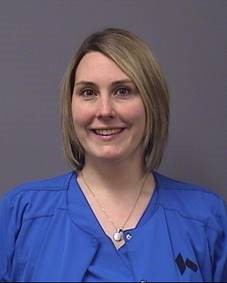June 2021
By Jeffrey Weinstein, MD, Kettering Health Patient Safety Officer; D’Anna Stekli, Kettering Health Infection Control Manager; and Lindsay Alexander, Kettering Health Quality and Patient Safety Manager
Welcome to the first edition of the Safety First column, where you can find important safety updates, quick tips, and shout-outs about our team members.
To start, I want to reaffirm our organization’s commitment to a culture of safety and zero harm. This commitment makes Kettering Health a safe place both to work and to receive care. To build this culture, we use multiple tools and processes:
- Midas event reporting system: Events entered in Midas helps us learn from and prevent errors from reoccurring. This system should be used to enter both near misses, which is when an error occurs, but harm does not reach the patient, as well as a serious reportable event (SRE). This is when an error results in a patient death or serious harm.
- Root cause analysis (RCA): We follow this process after an SRE to help us understand the underlying cause. An RCA is not about assigning blame, but rather understanding what systems allowed the error to occur. We then work together and develop plans to address that root cause, helping to prevent future incidents and keep each other and our patients safe.

Despite the importance of event reporting, literature shows that, nationally, only a fraction of safety events in hospitals are reported. But we can only improve if we understand our opportunities, which is why Kettering Health does not tolerate retaliation toward anyone who has reported unsafe behaviors, whether it is simply human error or events of at-risk behavior.
By reporting near misses and SREs, we can understand areas where we can continue to improve, ultimately enhancing the safety and the quality of care we provide.
Central line dressing tips and reminders
One of our opportunities to improve safety as an organization is in central line care dressing. Our Infection Prevention team provided the tips below to help us keep our patients safe and healthy:
Central line dressings should be assessed and changed by the bedside nurse when patients with preexisting lines have central line dressings that do not meet our standards upon admission and daily thereafter. This includes dialysis catheters, as waiting until the next dialysis treatment can lead to the development of a central line-associated bloodstream infection. Our standards for central line dressings are as follows:
- The dressing has no soilage or moisture present
- There is no lifting of the dressing, including the border
- The dressing is dated or can be readily found in EPIC and added to the dressing.
- The dressing is not expired (transparent dressings expire after 7 days, gauze dressings expire after 48 hours)
- A Biopatch is present
If the patient’s site is bleeding, a gauze dressing should be used and changed when the dressing is saturated or in 24 hours, whichever comes first.
To close this first column, I want to recognize team members who made great strides in our commitment to safety:
Southview Medical Center:
- Over 500 days since the last hospital-acquired C. diff infection.
- As of May 25, it has been 340 days since the last catheter associated urinary tract infection (CAUTI).
Sycamore Medical Center:
- As of May 25, it has been 347 days since the last central line-associated blood stream infection (CLABSI).

Mindy Curry, a nurse at Southview Medical Center, who had a “Great Catch” and proactively prevented harm from reaching a patient. Here is Mindy’s story, shared by a team member:
- Though the monitor reported the oxygen saturation was between 93-95% Mindy noticed a patient’s lips were purple. Upon further investigation, it was discovered that a finger tape probe was used on the forehead. Mindy’s critical thinking prevented harm to the patient. Upon investigation, this is not a supported practice. Respiratory Therapy is sharing information across the network. Thank you, Mindy.

